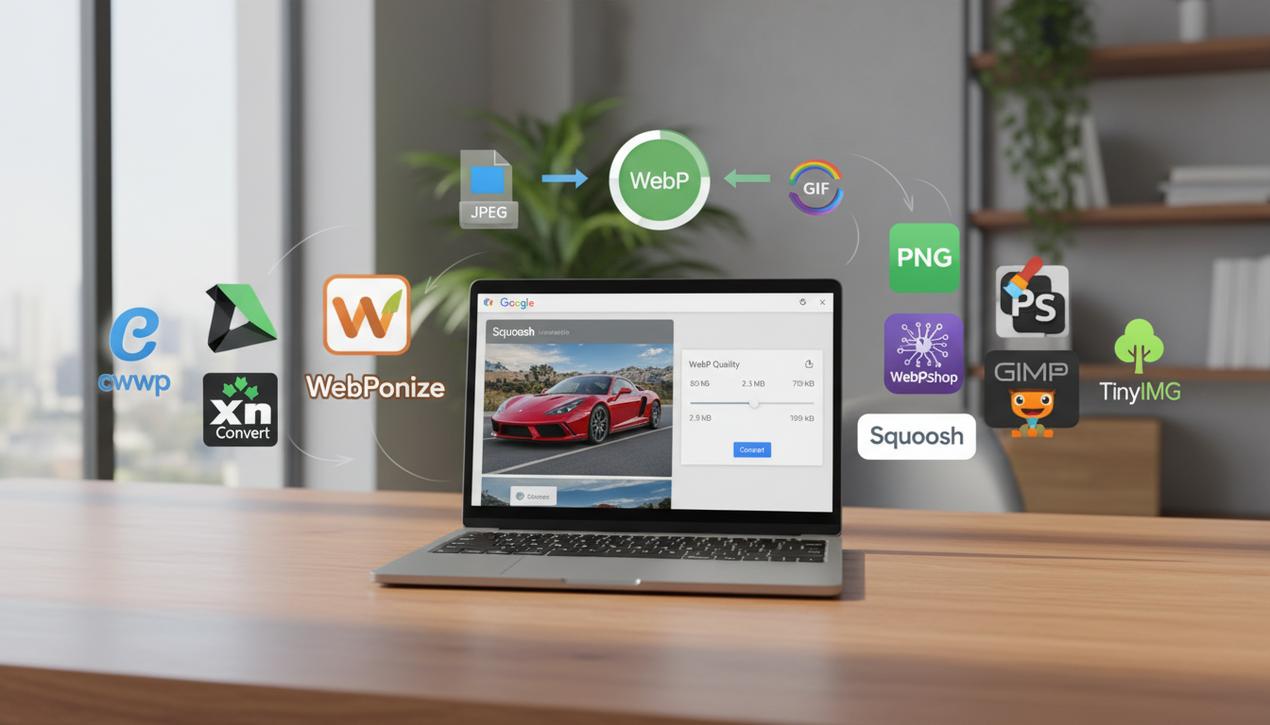How to Create a Video Game: The Complete 2025 Guide


The video game industry is an economic and cultural titan. With a global market projected to exceed $580 billion by 2025, the appeal of game development has never been stronger. Far from being reserved for elite studios with colossal budgets, creating games has been democratized by accessible tools and a wealth of online resources. However, transforming a brilliant idea into a playable experience is a demanding journey that requires organization, creativity, and meticulous attention to detail. Whether you’re an aspiring developer dreaming of creating your first indie game or a professional looking to structure your process, the fundamental steps remain the same. This comprehensive guide breaks down the process of creating a video game into 12 key stages, enriched with the latest trends and essential tools to lead your project to success.
Trends Shaping Game Creation in 2025
Before diving into development, it’s crucial to understand the currents driving the industry. These trends influence not only player expectations but also the technologies and business models available to creators.
- Generative AI Integration: Artificial intelligence is no longer just for improving NPC (non-player character) behavior. It’s now central to asset creation, enabling the procedural generation of worlds, quests, and dialogues, offering nearly infinite replayability and significantly cutting down development time.
- Games as a Service (GaaS): The “Game as a Service” model dominates. Instead of selling a finished product, studios develop games designed to evolve over the long term with regular content updates, seasonal events, and in-game purchases. This model now accounts for over 60% of the industry’s digital revenue.
- The Rise of Cloud Gaming: Services like Xbox Cloud Gaming and GeForce NOW are changing the landscape. They allow players to stream demanding titles on modest devices, broadening the potential audience but imposing new technical constraints on developers for streaming optimization.
- The Power of Indie Studios: The democratization of game engines has fueled the rise of smaller teams, often with fewer than 50 people, capable of producing high-quality, innovative games. Indie games now make up a significant portion of unit sales on platforms like Steam, with breakout hits like “Hades” or “Stray” achieving massive success.
- Cross-Platform and Immersive Experiences (VR/AR): Players expect to play their favorite games anywhere. Cross-platform development is becoming standard. While still a niche market, VR and AR continue to grow, requiring a completely different approach to gameplay and interface design for immersive platforms.
The 12-Step Guide to Creating Your Video Game
Following a structured process is the best way to avoid getting lost. Each step builds upon the last to construct a solid and coherent project.
1. Brainstorm and Define Your Core Concept
Every game begins with an idea. Start by listing several concepts without any filters. Explore different genres: RPG, survival, management, puzzle, platformer. Analyze what’s popular, but also look for gaps in the market. Once you have an initial list, refine each idea: What is the setting? What is the core gameplay loop? Who is the target audience? Narrow your list down to the concept that you are most passionate about and that seems feasible with your resources.
2. Write a Game Design Document (GDD)
The GDD is the blueprint for your project. It’s a living document that describes every aspect of your game in detail, and using tools like virtual whiteboards is a great idea. It should contain the story, characters, world, game mechanics, artistic choices, sound design, and even an initial marketing strategy. Never skip this step, even for a simple project. A solid GDD ensures that the entire team is working towards the same vision.
3. Choose Your Engine and Development Tools
Your choice of technology is crucial. You’ll need to select a game engine that fits your project and your skill level. A game engine provides the foundational software for creating a game, including the graphics renderer, physics system, sound management, and more. The programming language will often depend on the engine (C# for Unity, C++ for Unreal Engine).
4. Build a Playable Prototype
Prototyping is where you test the viability of your concept. The goal isn’t to create a beautiful game, but a “playable” version of your core mechanic. Is the game fun? Are the controls intuitive? This is the time to identify fundamental design flaws and fix them before investing hundreds of hours into full production.
5. Enter Full Production and Create Assets
Once the prototype is validated, the production phase begins. This is usually the longest part of the process. It involves creating all the game’s content (the “assets”): 3D models, 2D sprites, animations, environments, textures, sound effects, music, dialogue, and more. Finding the right graphic design inspiration is key here. This is where the game truly comes to life.
6. Master the Art of the Tutorial and Onboarding
The First Time User Experience (FTUE) is critical. A good tutorial should teach the game’s mechanics intuitively and seamlessly, without overwhelming the player with information. The golden rule is “show, don’t tell.” Guide the player through action rather than walls of text. A great onboarding experience blends so well into the game that the player learns without even realizing it.
7. Conduct Thorough Testing and QA
No game is released without bugs. The Quality Assurance (QA) phase is essential. It involves testing the game from every angle to find and fix bugs, performance issues, gameplay inconsistencies, and exploits. You can hire professional testers or organize beta testing sessions with a community of players.
8. Develop a Solid Marketing and Communication Plan
The best game in the world won’t sell if no one knows it exists. Marketing should start long before launch. Create a website, be active on social media, share screenshots and gameplay GIFs, and build a community around your project. Offering a playable demo on platforms like Steam is an excellent strategy to generate interest.
9. Plan for Launch and Distribution
Choosing where to publish your game is a strategic decision. The PC market is dominated by platforms like Steam, the Epic Games Store, and GOG.com. For consoles, you must go through the digital storefronts of Sony (PlayStation Network), Microsoft (Xbox), and Nintendo. The mobile market has its own giants with Apple’s App Store and the Google Play Store.
10. Provide Post-Launch Support and Updates
The work doesn’t end when the game is released. You must provide technical support, fix bugs reported by players, and ideally, offer new content to keep the community engaged. This is the heart of the GaaS model: keeping the game alive and thriving long after its initial launch.
11. Analyze Player Feedback and Monetization
After launch, carefully analyze player feedback and in–game data. What do players love? Where do they get stuck? This information is invaluable for future updates. If your game includes monetization, track its performance and adjust your strategy to be fair to players while ensuring the game’s financial viability.
12. Find Your Motivation and Push Your Limits
Game development is a marathon, and for many, it starts with learning how to become a freelancer. It’s crucial to understand your personal motivations. Are you driven by a passion for storytelling, a love for programming, or the challenge of creating something new? Write down what drives you and refer back to it during difficult times. This passion will be the fuel that helps you push through challenges and bring your vision to completion.
Top Game Engines for 2025
Choosing the right engine is one of the most important decisions you’ll make. Here is a selection of the most popular tools, suited for different needs.
- Unity: The quintessential all-rounder. Relatively easy to learn, it’s ideal for 2D and 3D games across all platforms (PC, console, mobile). Its massive community and Asset Store make it a top choice for beginners and indie studios.
- Unreal Engine: Known for its stunning graphics and photorealistic rendering, it’s the engine of choice for many AAA games. While its learning curve is steeper (based on C++), its “Blueprints” visual scripting system allows for rapid prototyping without coding.
- Godot Engine: The rising star of open-source. It’s completely free, lightweight, and highly flexible, excellent for both 2D and 3D. Its growing community and intuitive node-based system are widely praised.
- GameMaker Studio: A benchmark for 2D game development. Many indie hits like “Undertale” and “Hotline Miami” were created with GameMaker. It’s highly accessible for beginners thanks to its simplified scripting language (GML).
- GDevelop: The perfect option for those who want to avoid coding. GDevelop is an open-source engine based on a visual event system, allowing you to create full-featured 2D games without writing a single line of code.
- RPG Maker Series: As the name implies, this engine specializes in creating Japanese-style role-playing games (JRPGs). It is extremely user-friendly for this specific genre.
- CryEngine: A powerhouse known for its high-fidelity visuals and advanced physics, often used for first-person shooters. It offers a “what you see is what you play” development experience and has become more accessible in recent years.
Creating a video game is a complex process that blends technical skill with artistic vision. However, by following a clear methodology, choosing the right tools, and staying attuned to industry trends, this dream is more accessible than ever. The key to success lies in passion, perseverance, and the ability to transform a simple idea into a memorable interactive experience.




